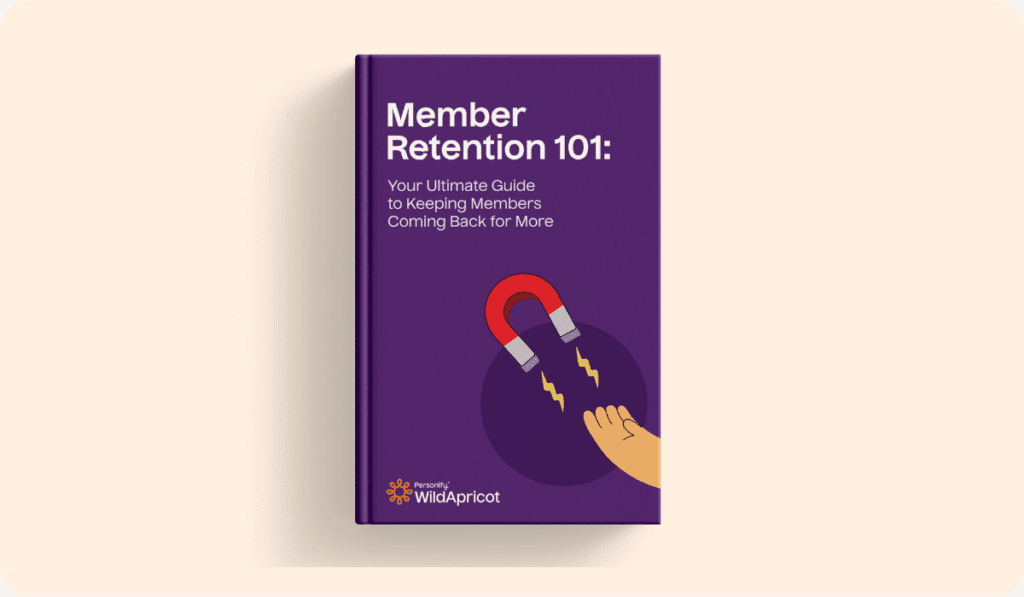HOA bylaws are an incredible tool for guiding your homeowners association’s daily operations—and setting you up for future success!
Whether you’re just getting started managing an HOA or are looking for ways to make your operations more effective, it’s always worth it to give your bylaws some attention.
Curious about if your HOA bylaws are being used to their full potential?
This blog post will show you:
- The HOA bylaws definition
- Why HOA bylaws matter
- The difference between HOA bylaws and covenants
- How to write and update HOA bylaws
- The legal aspects of bylaws
- Where to put your HOA bylaws
- Sample HOA bylaws
- And more!
Let’s get started!
What Are HOA Bylaws & Why Do You Need Them?
HOA bylaws are the rules that govern how a homeowners association operates behind the scenes. These rules typically cover your organization’s day-to-day operations, and guide decision-making for the association’s board of directors.
Are HOA bylaws legally required? Yes!
Because homeowners associations are legally classified as nonprofit corporations, it’s a legal requirement to have bylaws in place. HOA bylaws should be created when you’re first starting a homeowner association.
The order of operations typically looks like this:
- Write and file your articles of incorporation
- Create the covenants, conditions and restrictions (we’ll get into those in a second!)
- Turn those CC&Rs into reader-friendly rules for residents
- Write your HOA bylaws and other governing documents
- Elect your officers and board members
HOA bylaws should always be created before board member elections because they give your board members rules to follow. With all of the structured documentation in place, it’ll be much easier for everyone to effectively do their jobs.
What’s The Difference Between HOA Bylaws & Covenants?
Different members of a homeowners association require different sets of rules! While HOA bylaws and covenants, conditions and restrictions (CC&Rs) are similar, they each serve a different purpose. There are also Rules & Requirements to explore, which we’ll get into below!
HOA Bylaws
HOA bylaws are created specifically for managing and guiding an HOA’s board of directors.
They provide guidance around:
- Meetings
- Elections
- Roles and responsibilities
Essentially, HOA bylaws govern the way things are run behind the scenes. If these bylaws are working effectively, most homeowners will never even notice they’re there!
Covenants, Conditions and Restrictions
The Declaration of Covenants, Conditions and Restrictions (CC&Rs) are a set of rules for the community of homeowners themselves. They are as legally binding and enforceable as your HOA bylaws, and also need to be officially filed with the state.
A few common CC&Rs include:
- Pet rules
- Dues obligations
- Paint color and yard maintenance requirements
- Parking and storage rules
- Procedures and penalties for rule enforcements
- Insurance requirements
- Processes for resolving disputes
These are a bit different from…
Rules & Regulations
While it’s possible to amend both HOA bylaws and CC&Rs, it can be a long process because they’re legally binding. This is where Rules & Regulations come in! Something that qualifies as a rule rather than a covenant can be changed with a simple vote from board members and the community, which saves a lot of time and energy.
For example, the hours a pool is available to the public would be better served as a rule than a covenant because of seasonal changes.
Who Enforces HOA Bylaws?
HOA bylaws—as well as the CC&Rs!—are typically enforced by the board of directors. In some cases, the board might delegate specific enforcement tasks to committees. This helps make sure the people who are most familiar with the rules can make the final calls on enforcement!
Another option for HOA bylaw enforcement is enlisting the help of an HOA management company. These companies can act as a neutral third party when it comes to managing community members. This takes some of the pressure off the board when it comes to difficult things like fines and suspensions.
HOA management companies are also useful for:
- Advising on financial and legal matters
- Processing maintenance requests
- Running reserve studies for HOAs
- Managing large projects
- Collecting fees
- And more!
If your board is feeling overwhelmed by the amount they’re in charge of, include a conversation about hiring one of these companies in your next board meeting.
HOA Bylaws or State Laws: Which Takes Precedence?
State, federal and constitutional laws almost always take precedence over HOA bylaws. Some state laws might have phrasing like “unless otherwise stated in association documents”, but unless you see that on the government website, always assume state laws have the final word!
Each state has different requirements for their bylaws, such as:
- How they should be written
- Where they need to be visible
- The date at which they’re filed
The Homeowners Protection Bureau has a resource list of HOA requirements broken down by each state. Before you get your HOA bylaws drafted, check out what your state laws are. This will save you the trouble of potentially managing legal conflicts and fines down the road!
What Should Be Included in Your HOA Bylaws
General Provisions
Your general provisions lay out the basics of your organization and how your bylaws will be applied, and typically include:
- Name and location
- Definitions of what capitalized terms mean
- Fiscal year
- What laws take precedent and in which order (state laws, articles, bylaws, etc.)
You can also include your association’s purpose, but that will already be defined in your articles of incorporation.
Membership Requirements
The details of member rules will be laid out in your CC&Rs and Rules & Regulations, but it’s good to define some basics like:
- Who qualifies as a member under your association’s jurisdiction
- Member rights and limitations
- The cost of dues and payment timelines
Meeting of Members
Member meetings are an important part of any homeowners association, and your HOA bylaws should include an overview of:
- Meeting frequency (annual, special, etc.)
- Quorum requirements
- Voting eligibility
- Rules around proxy votes
Board of Directors
Because your HOA bylaws are largely for your board of directors’ use, they should include a full layout of board member rules, such as:
- A list of roles and responsibilities (ex: the Secretary manages taking HOA meeting minutes, signing off on essential documents and managing records)
- Powers
- Duties
- Minimum and maximum number of board members
- Duration of service
- Nomination and election procedures
- Frequency of elections
- Compensation
- Terms of and procedures for removals
- Resignation processes
With this guidance in your homeowners association bylaws, board members will have a full understanding of how to do their jobs effectively.
Meeting of Board of Directors
Board meetings are just as important as member meetings, so be sure to include information such as:
- Meeting frequency
- Type of meetings (regular, special, etc.)
- Quorum requirements
- Actions that can be taken without meetings
Officers and Their Duties
Along with board members, your homeowners association will also have officers!
Your HOA bylaws should include officer information such as:
- A list of roles (President, Vice President, Secretary, Treasurer, etc.)
- How vacancies are managed (typically a board member steps in for the interim)
- Term of office
- Breakdown of duties by role
- How elections work
Should there be any challenges with your officers, this section of your bylaws will guide your board on what’s within your officers’ jurisdiction.
Committees
Many HOAs end up having special committees which are formed by the board of directors.
To guide this process, include a section on how committees are:
- Created
- Structured
- Dissolved
There should also be a note of who can be voted onto them, and how the voting process works!
Books and Records
Include some guidance on document management, such as:
- Which documents are publicly available to members, and if they must pay to see them
- The date by which outgoing officers and board members must relinquish official documents and property of the association
Noncompliance Management
The key to successfully managing noncompliance is having structure in place before it ever occurs!
In this section, you should:
- Define noncompliance
- List enforcement strategies
- Note penalties and procedures
Amendments
To keep amendments from being a headache, include a section on:
- How amendments are managed for HOA bylaws, CC&Rs and Rules & Regulations
- Effective date of amendments
- How your HOA can be dissolved
Certification
This is the final sign off from designated board member that the bylaws are legitimate and ready for submission to your state government!
Unenforceable HOA Bylaws
It’s important to know which HOA bylaws are actually legal to enforce! If you’re not aware of government laws or what’s legally allowed, your homeowners association might find itself facing a lawsuit.
Working Outside of Local, State and National Laws
As we previously mentioned, government laws trump your homeowners association bylaws. Be sure to keep up to date with local, state and federal laws to make sure your bylaws are in compliance.
Selective Enforcement
Selective enforcement refers to when an HOA doesn’t apply enforcement equally to all members. This could mean enforcing a rule on an individual or a small group, but making exceptions for others.
This process is discrimination, and inconsistent and selective enforcement can actually nullify your bylaws altogether!
This doesn’t always happen on purpose. For example, new board members might be more stringent on rules that weren’t previously enforced, and make an example of homeowners with repeated violations. But this shift is still selective enforcement.
If your board wants to be more strict with bylaws, mention this at a meeting with language like: “previously [bylaw] has been somewhat lax, but for [reason] we will be enforcing it more strictly on all homeowners who are noncompliant.” Once that’s said, stick to it across the board!
Houses Outside the Association’s Jurisdiction
Be very, very clear on which homes are a part of your association. We get it—it can be frustrating to put so much effort into community rules just to have a neighbor do something entirely different. But at the end of the day, as long as no one is breaking the law, it is within their rights to run their home and property how they want.
Where To Find HOA Bylaws
There are a few places where you can put your HOA bylaws, including your:
- HOA website. This will keep them freely available to current and prospective members, and show your commitment to transparency.
- Members forum. Where your website will be externally facing, it can also be valuable to put your HOA bylaws in an internal space. This is another way to get your members more active in community spaces!
- HOA newsletter. It never hurts to send out a reminder of what’s going on behind the scenes. Send out a copy of your bylaws when you have a board member transition.
You might be wondering: are HOA bylaws public record? The answer is that it depends! This is another case where you’ll want to consult your state laws.
Looking to streamline your bylaws distribution along with all your other member comms? WildApricot’s membership management software can make it easy!
Our software can provide you with:
- A branded website
- A member directory and database
- Automated dues collection
- Streamlined communication tools
- And more!
Sign up for our 60-day free trial to see what we can do for your homeowners association.
Sample HOA Bylaws
Here’s an HOA bylaws example from the Minors West Homeowner’s Association. Their HOA website includes a header in the menu that reads “governing documents”, which links to a page with every document you could possibly need!
There is a specific note about mailbox requirements on the page itself. Presumably, this has been a point of confusion in the community, so this layout makes it easy for members to find the requirements and be in compliance.
Minors West’s HOA bylaws’ articles include:
- Name and Location
- Definitions
- Meeting of Owners
- Board of Directors Selection – Term of Office
- Meeting of Directors
- Powers and Duties of the Board of Directors
- Officers and Their Duties
- Committees
- Books and Records
- Assessments
- Abatement and Enjoining of Violations
- Notice of Conveyance
- Conflicts
- Amendments
- Fiscal Year
- Corporate Seal
- Indemnity of Officers and Directors
This is an incredibly thorough set of HOA bylaws, and one worth modeling to have as many bases covered as possible! Take a look at some of the other governing documents on the website to get an idea of other information you can include for homeowners.
Writing HOA Bylaws That Help Your Community
We hope all of this information is useful for creating your HOA bylaws! With the rules and guiding principles clearly laid out, you can spend less time scratching your head over conflicts and more finding ways to make your community shine.
Looking for HOA software that’ll make your life easier across the board?
Connect with us at WildApricot to sign up for your own 60-day free trial of our award-winning member management software!









